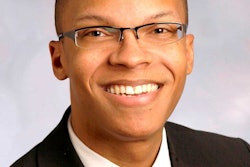Despite being a lifelong lover of math, Dr. Federico Ardila spent much of his undergraduate studies certain he would pursue some other vocation. After all, he didn’t know many mathematicians in his native Colombia. As it turned out, Ardila not only teaches math, but he’s building a small but steady pipeline of future mathematicians — in this country and his homeland.
Through the online classes that are part of his San Francisco State University-Colombia Combinatorics Initiative, Ardila brings together mathematics students from SFSU; the University of California, Berkeley; and Universidad de Los Andes in Bogotá, Colombia.
A relatively new branch of math that studies finite — or countable — discrete structures, combinatorics is a bridge between pure and applied mathematics. While non-mathematicians may be unfamiliar with the field, they have surely seen it in daily life. For instance, Sudoku puzzles are toy versions of combinatorics. The objective of Sudoku is to fill a partially filled grid with digits so that, when completed, each horizontal row, column and sub-grid contains every number from 1 to 9 no more than once.
Offering much more than recreation, though, combinatorics has computer science and optimization applications. When large geographical areas devastated by natural disaster require entire telecommunications networks to be replaced, combinatorics provides tools to determine the most cost-effective strategy to reconnect communities.




















